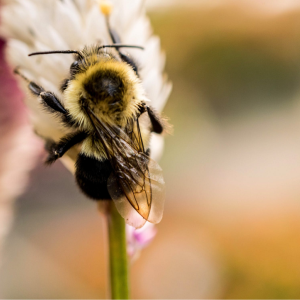
This paper sets out a conceptual framework for a “pesticide treadmill”, in which pesticide use initiates a self-reinforcing vicious cycle, which can be escaped from in certain circumstances. It illustrates its arguments using case studies from Sudan and Nicaragua, and sets out similarities and differences between modern neonicotinoid usage patterns and historical examples of pesticide treadmills.
The “pesticide treadmill” consists of drivers from four domains:
- Farming. For example, synthetic pesticide use can be harmful to the natural predators of pests, further entrenching farmer’s dependence on pesticides.
- Agro-landscapes. For example, converting semi-natural landscapes into intensively managed farmland can damage the habitat of natural pest predators.
- Science and technology. For example, a preference for certain pest management technologies can trigger research and development into further developing that technology and encouraging user uptake.
- Society. For example, farmers may use pesticides to meet the standards set by supermarkets.
Abstract
Overreliance on synthetic insecticides in global agriculture is the outcome of a “pesticide treadmill,” in which insecticide-induced pest resistance development and the depletion of beneficial insect populations aggravate farmers’ pesticide dependencies. Examples of the pesticide treadmill have been witnessed repeatedly over the past seven decades, prompting the question whether the rapid uptake and usage patterns of neonicotinoid insecticides and their associated environmental impact are in accordance with this recurrent phenomenon. We hypothesise a conceptual framework in which treadmills are enforced by enabling or disabling drivers within four domains: pest management decisions at the farm level, characteristics of farming landscapes, science and technology, and societal demands. These drivers then tend to create a self-enforcing pesticide “lock-in.” We then analyse several post-1950s historical case studies with reference to this framework, e.g., those involving sprays of the highly hazardous DDT and methyl-parathion, in which the pesticide treadmill was initiated, sustained, and broken, and compare this with current patterns in neonicotinoid use. Historical case studies further illustrate how treadmills occur in three phases in which (i) a limited number of insecticides are routinely used, (ii) resistance development of pests results in the increased crop injury, prompting increased frequency of applications with a wider range of products, (iii) breaking out of the pesticide “lock-in” by policy change and adoption of alternative technologies that lowered chemical inputs and improved agro-ecosystem functioning. The analysis shows similarities as well as differences between neonicotinoid usage patterns and historic pesticide treadmills, and provides guidance on how to effectively avoid or dismantle pesticide treadmills in global agriculture.
Reference
Bakker, L., van der Werf, W., Tittonell, P.A., Wyckhuys, K.A. and Bianchi, F.J., 2020. Neonicotinoids in global agriculture: evidence for a new pesticide treadmill?. Ecology and Society, 25(3).
Read the full paper here. See also the Table explainer What is sustainable intensification?







Post a new comment »